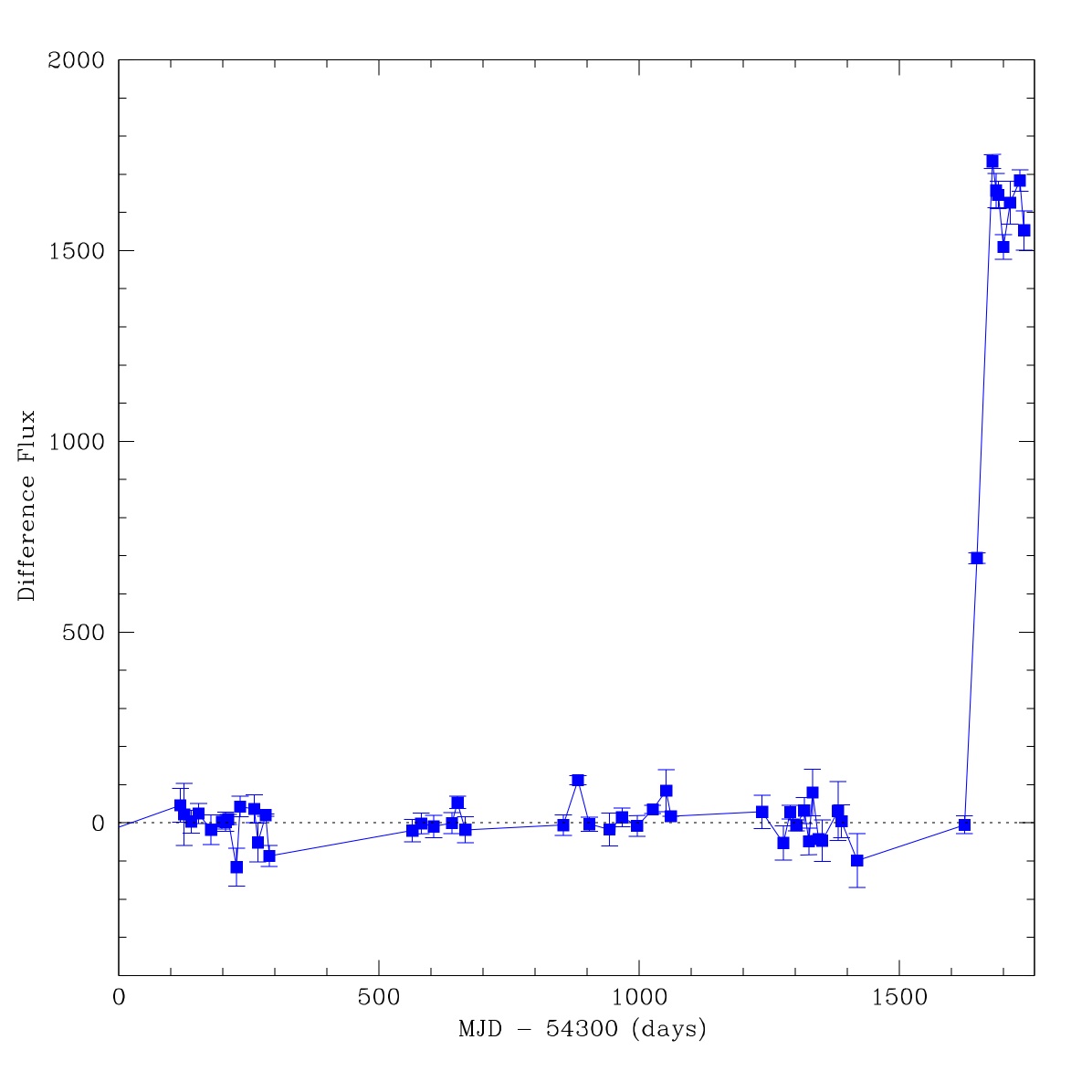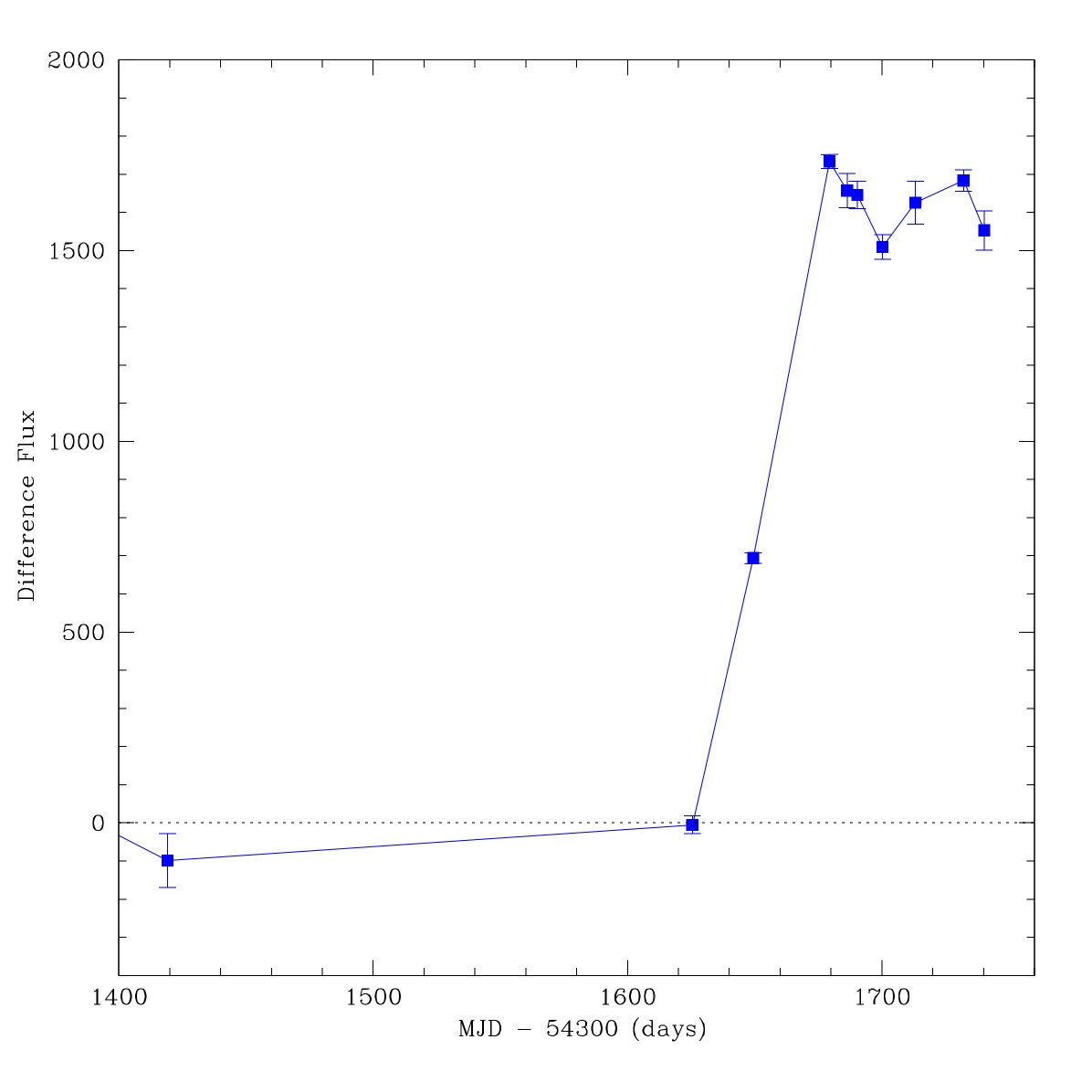

Follow-up observations were taken with the Palomar 1.5m telescope in g,r,i and z on March 29.13UT and showed that the event had colours g-r=0.53, r-i=0.26 and i-z=0.04. For nearby supernovae such colours are most consistent with a core collapse events (see Poznaski et al. 2002 figure 8 and 9). Additional CSS observations of the object were taken on Apr. 15UT The combined CSS data, Figure 1, appear to show some evidence for variability near peak brightness, although additional analysis is required to constrain variability of the host galaxy.

|

|
Spectroscopic observations were taken with the Gran Telescopio CANARIAS (GTC) on April 17th with OSIRIS using the R1000B grism (range 370-785 nm). The spectrum shows features of type-Ia/Ic SNe along with broad and narrow Balmer features associated with type-IIn.
Based on narrow lines in the spectrum the supernova is at redshift z=0.09. After correcting for foreground reddening of Av=0.17, based on Schlegel et al. (1998, ApJ, 500, 525) exinction maps, the peak observed luminosity of the event is Mv~-20.5. This is significantly brighter the normal type-Ia events and consistent with supernovae such as SN 2005gj. The spectrum is consistent with events that were previously noted as type-Ia's interacting with the CSM. For example SN 2002ic and SN 2005gj as well as hypernova candidate SN 1997cy (Germany et al. 2000). In Figure 2, we show the spectrum along with that of SN 2005gj from Aldering et al. (2006). The difference between the two spectra appear to be due to the presence of [OII], [OIII] and [S II] emission from the host galaxy. The observed peak luminosity is also very similar to that of SN 2005gj (Aldering et al. 2006) and SN 1997cy (Germany et al. 2000).

The variability near peak may be a sign of the interaction between supernova shock and a clumpy CSM. However, more detailed analysis is required to determine whether the variability may be caused by underlying variability, such as caused by an AGN in the host galaxy.
Summary
Based on the spectroscopic features and photometric lightcurve of CSS120327 it
is a supernova like SN 2002ic, SN 2005gj and SN 1997cy. Further analysis and
follow-up is required to investigate the evolution of the source and the
variability of its host.